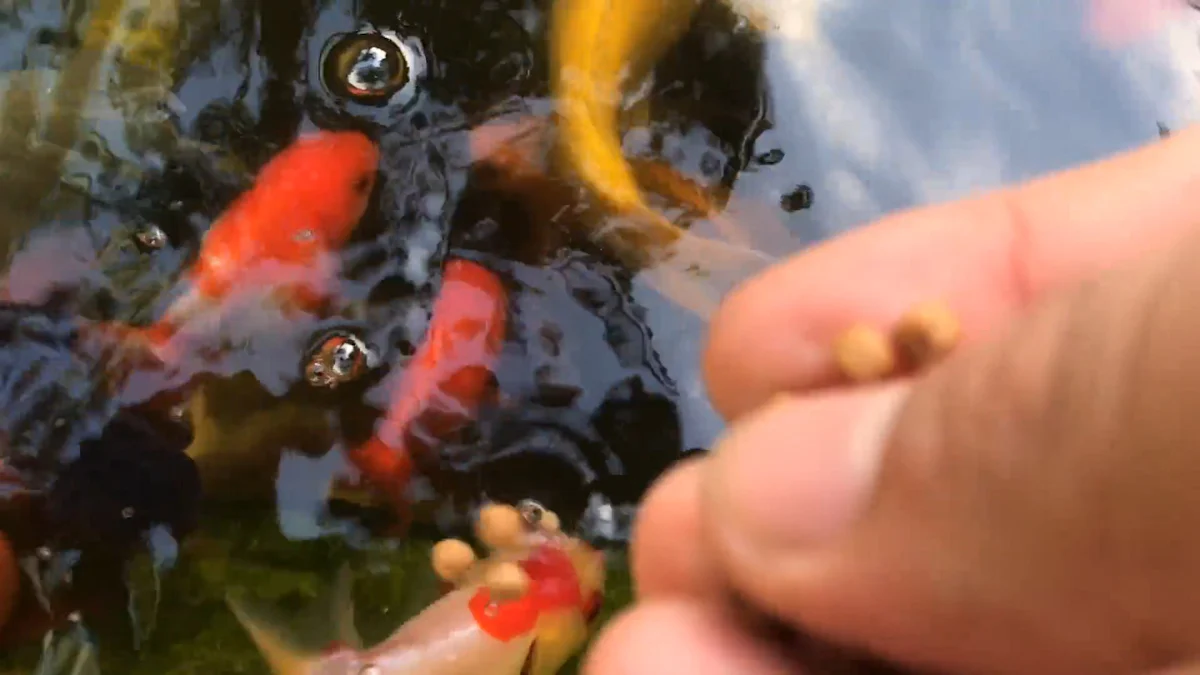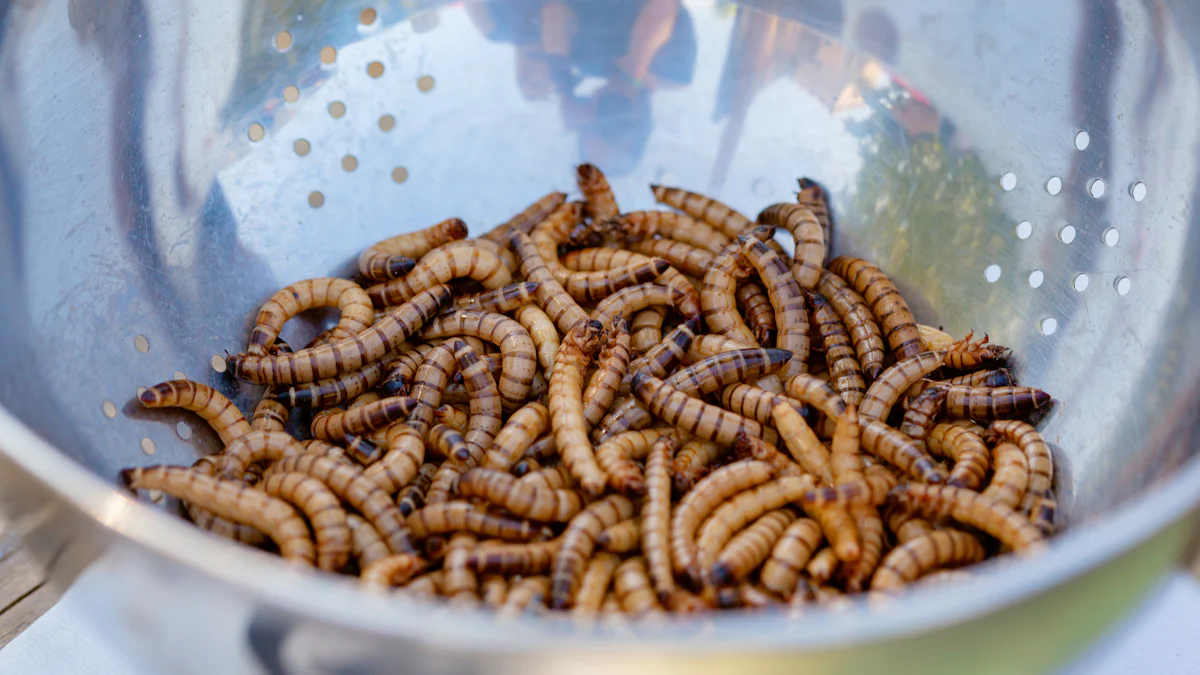
Dried mealworms are a fantastic addition to a fish’s diet. Packed with protein, they help fish build muscle and maintain energy. Many fish, like goldfish, bettas, and cichlids, enjoy them because they mimic the insects found in their natural habitats. These mealworms also provide healthy fats, which enhance vibrant scales and boost immunity. 🐟
Fish that are carnivorous or omnivorous thrive on diets resembling what they eat in the wild. Mealworms fish love to forage for can stimulate natural feeding behaviors, keeping them active and healthy. Whether dried, frozen, or live, mealworms have long been a trusted food source for fish enthusiasts.
Key Takeaways
- Dried mealworms are healthy snacks for fish. They have protein and fats that help muscles grow and scales shine.
- Soaking mealworms before feeding helps fish digest them better. This is important for small fish and stops choking.
- Give mealworms only once or twice a week. This keeps their diet balanced and prevents problems like weight gain.
Nutritional Benefits of Mealworms Fish

High Protein and Nutrient Content
Dried mealworms are a powerhouse of nutrition for fish. They contain about 50% protein, making them an excellent choice for muscle growth and energy. Along with protein, they provide around 30% healthy fats and essential amino acids. These nutrients help fish maintain vibrant scales, a strong immune system, and overall vitality.
Here’s a quick breakdown of the key nutrients in dried mealworms and their benefits:
| Nutrient Type | Benefits for Fish Health |
|---|---|
| High Protein | Essential for muscle development and growth, maintaining energy levels. |
| Healthy Fats | Contributes to vibrant scales and a robust immune system, helping fish combat stress. |
| Vitamins (B12) | Supports overall health and vitality. |
| Minerals (Iron, Zinc) | Contributes to stronger bones and improved oxygen circulation. |
| Essential Fatty Acids | Supports brain function and reproductive health. |
This nutrient-rich profile makes mealworms fish love a valuable addition to their diet.
Mimics Natural Diet for Carnivorous and Omnivorous Fish
Mealworms closely resemble the insects that carnivorous and omnivorous fish eat in the wild. Their crunchy texture and high protein content make them irresistible. Fish naturally gravitate toward mealworms because they mimic their natural prey. This encourages healthy feeding behaviors and keeps fish active.
Dried mealworms typically consist of 50% protein and 30% fat, along with fiber and vitamins. These nutrients make them a nutritious treat for fish. Whether it’s goldfish, bettas, or cichlids, many species benefit from a diet that mirrors what they would eat in their natural habitats.
Suitable for Larger Fish Species
Larger fish species, like koi, oscars, and arowanas, thrive on dried mealworms. These fish require a diet rich in protein and fats to support their size and energy needs. Mealworms provide essential fatty acids that help with muscle development and keep these fish active.
For example, carnivorous fish like oscars and arowanas benefit from the high protein content in mealworms. Koi and goldfish also enjoy them as a treat, as they mimic the insects these fish would forage for in the wild. Including mealworms fish enjoy in their diet ensures they stay healthy and satisfied.
Feeding Mealworms Fish Safely
Preparing and Soaking Dried Mealworms
Dried mealworms are a convenient option for fish, but they need a little preparation before feeding. Soaking them in water for a few minutes softens their texture, making them easier for fish to digest. This step is especially helpful for fish with smaller mouths or weaker jaws. Hydrating the mealworms also prevents them from floating on the water’s surface, ensuring all fish in the tank can access them.
For fish that are new to mealworms, soaking can make the treat more appealing. The softened texture mimics live prey, encouraging fish to eat. Always use clean, dechlorinated water for soaking to avoid introducing harmful substances into the tank.
Portion Sizes and Feeding Frequency
Feeding mealworms fish enjoy requires careful portioning to avoid overfeeding. Offering them once or twice a week is ideal. This frequency provides variety without overwhelming the fish’s nutritional needs.
Here are some tips for portion sizes:
- Break mealworms into smaller pieces for smaller fish.
- Feed larger fish whole mealworms as an occasional treat.
- Observe fish behavior during feeding to determine the right amount.
Overfeeding can lead to uneaten food, which may pollute the tank and harm water quality. Keeping portions small ensures fish stay healthy and active.
Chopping Mealworms for Smaller Fish
Smaller fish species may struggle with whole mealworms due to their hard exoskeletons. Chopping or crushing the mealworms into smaller pieces makes them safer to eat. This step reduces the risk of choking and improves nutrient absorption.
To prepare mealworms for smaller fish:
- Use a knife or scissors to break them into tiny pieces.
- Crush them slightly to soften the exoskeleton.
- Ensure the pieces are small enough for the fish to swallow comfortably.
Taking the time to chop mealworms ensures all fish in the tank can enjoy this nutritious treat. It also helps maintain a balanced diet for smaller species.
Risks and Precautions of Feeding Mealworms Fish
Risk of Overfeeding and Obesity
Feeding too many mealworms can harm a fish’s health. Overfeeding disrupts their balanced diet and may lead to obesity or digestive problems. Fish need a variety of foods to stay healthy, so mealworms should only be a small part of their diet. Treat them as a supplement, not the main course.
To avoid overfeeding, offer mealworms once or twice a week. This keeps their diet diverse without overwhelming their nutritional needs. For smaller fish, chop or crush the mealworms into manageable pieces. This prevents choking and ensures they can enjoy the treat safely. Always source mealworms from trusted suppliers to avoid introducing harmful parasites or pathogens into the tank.
A balanced diet is key. Combine mealworms with other foods like flakes, pellets, or vegetables to ensure your fish get all the nutrients they need.
Digestibility Issues with Exoskeletons
Mealworms have a tough exoskeleton that some fish may struggle to digest. This can lead to bloating or other digestive issues, especially in smaller species. Preparing the mealworms properly can help.
Soaking dried mealworms in water softens their texture, making them easier to chew and digest. For smaller fish, chopping or crushing the mealworms further reduces the risk of digestive problems. These simple steps ensure all fish can safely enjoy this protein-packed treat.
Additives in Commercial Products
Not all dried mealworms are created equal. Some commercial products contain additives or preservatives that may harm fish. These chemicals can affect water quality or even cause health issues over time.
When buying mealworms, check the label carefully. Look for products without added chemicals or artificial ingredients. Organic or natural options are often the safest choice. By selecting high-quality mealworms, fish owners can provide a nutritious treat without compromising their pet’s health.
Dried mealworms make a nutritious and safe treat for fish when used correctly. They provide essential nutrients like protein and fatty acids, supporting growth, vibrant scales, and overall health. To ensure safety, always source mealworms from reputable suppliers and store them properly. Feed them in moderation as a supplement, not a primary food source.
Tip: Handle mealworms with clean utensils and soak them before feeding to improve digestibility.
By mimicking the natural diet of carnivorous and omnivorous fish, dried mealworms encourage healthy feeding behaviors. With proper care, they can be a valuable addition to your fish’s diet.
FAQ
Can all fish eat dried mealworms?
No, not all fish can eat them. Carnivorous and omnivorous fish benefit most. Herbivorous fish may not digest mealworms well.
How should dried mealworms be stored?
Store them in a cool, dry place. Use an airtight container to keep them fresh and prevent contamination.
Are live mealworms better than dried ones?
Live mealworms mimic natural prey better. However, dried mealworms are more convenient and still provide excellent nutrition when prepared properly.


